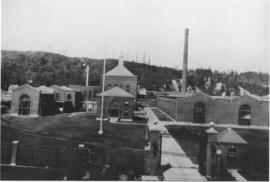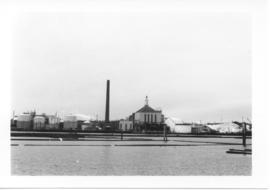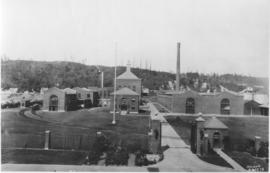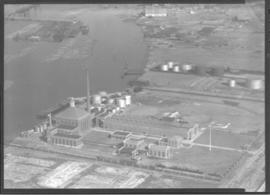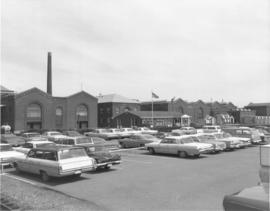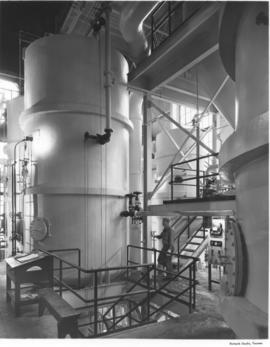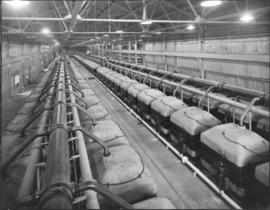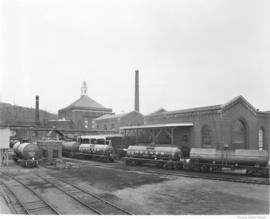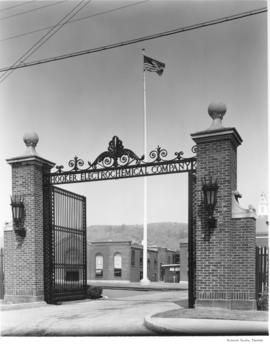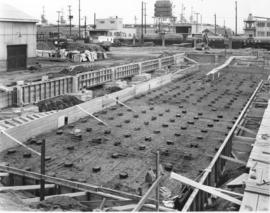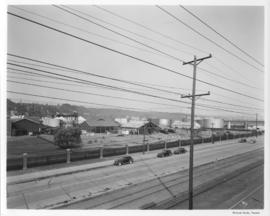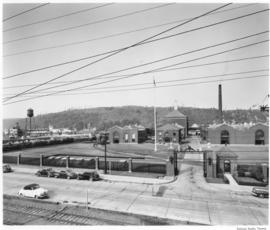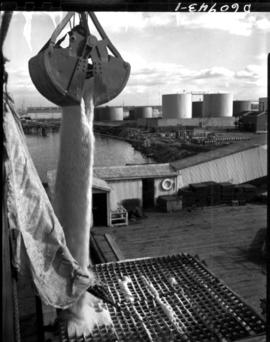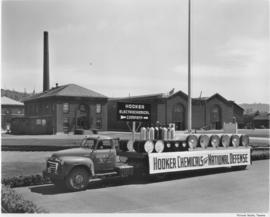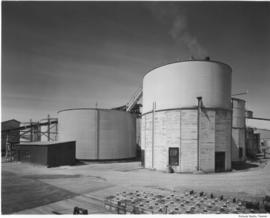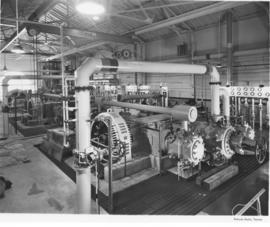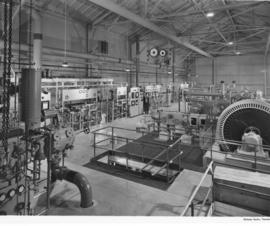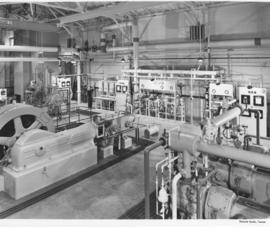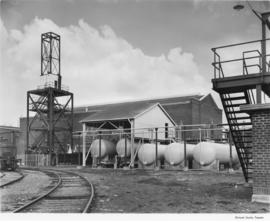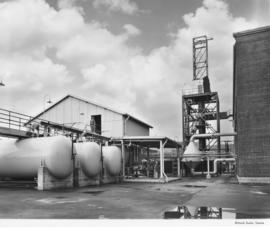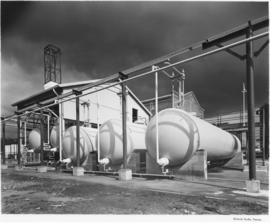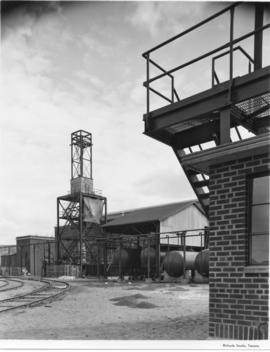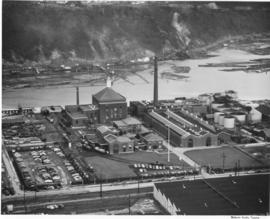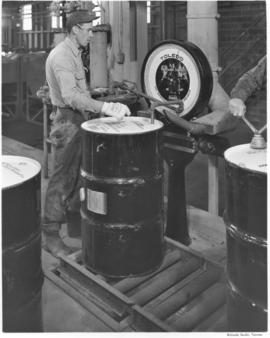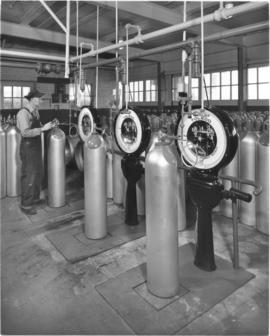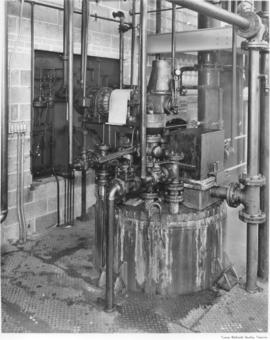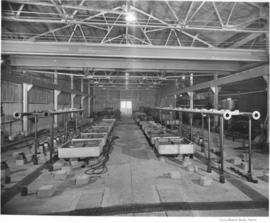- Item
- 5 images. Hooker Electrochemical Co. McKim, Mead & White (New York), arch. J.M. Rowland, engineer Austin Co., contr. -built on site of old Foundation Shipyard -180 ft. brick smokestack (200 ft. before the 1949 earthquake) -plant opened 02/16/1929 -name changed to Occidental Chemical Co. in 1982 -purchased by Pioneer Companies, Inc. in 1997 and renamed Pioneer Chlor Alkali -chemical operations ceased 03/15/2002 -demolished in 2008
- TDL 06/29/1928 p.1 Hooker plant here assured
- TDL 08/02/1928 p.10 Chemical plant construction to start in 30 days
- TDL 08/28/1928 p.8 Hooker Company takes out permit to build factory
- TDL 09/09/1928 A11 New plants in building race (il under construction)
- TDL 12/16/1928 A1 New Tideflat industries aid city's growth (il)
- TDL 01/01/1929 p.3 Guardian angel was on the job; iron worker falls 60 feet... T.Times 02/01/1929 Tacoma's newest plant nearly ready (il)
- TDL 02/02/1929 p.12 Chemical plant producing now
- TDL 02/16/1929 p.12 Hooker plant opens today
- TDL 02/17/1929 A2 Open home of new industry at ceremony
- TDL 04/09/1929 Sec.III p.5 (ad,il) Gravure Sec. p.5 (il)
- TDL 04/29/1930 Hooker Company has model plant
- TDL 10/19/1930 A8 Unkempt Tide flat area becomes a beauty spot (il)
- TDL 05/26/1931 Sec.III p.5 (ad,il)
- TDL 05/06/1934 B7 (cell house to be built by Clark & Early, contr.)
- TDL 01/01/1937 p.1 (permit for new smoke stack)
- TNT 10/04/1937 p.2 Putting in big plant (hydrogenation plant by McKim, Mead & White, arch.)
- TNT 11/08/1937 p.1 $15,000 for new plant (hydrogenization plant by Allen & Early, contr.)
- TNT 09/30/1941 p.1 Industry on the march (new firewall and tanks by R.T. Early Co., contr.)
- TNT 02/15/1949 A6 (aerial il)
- TNT 01/23/1950 p.1 Plant here will expand
- TNT 02/14/1950 (aerial il)
- TNT 06/22/1950 D3 Hooker plant gets permit
- TNT 11/03/1950 p.1 Hooker will erect new $2,000,000 plant (new ammonia plant)
- TNT 02/13/1951 Chemical industries make plans to expand (interior il)
- TNT 11/29/1951 B4 Hooker Co. announces expansion
- TNT 10/19/1952 p.C15 $6,000,000 expansion under way ... (anhydrous ammonia plant by Chemical Construction Corp., arch. and Roy T. Early Co.,contr.) (il)
- TNT 03/12/1953 D3 Fall off ladder fatal for man (death of Olaf Boyd)
- TNT 05/24/1953 C16 Hooker firm building new power station
- TNT 02/4/1954 B2 Hooker sees new growth (aerial il)
- TNT 05/17/1954 p.17, 20 Hooker celebrates 25 years of progress in Tacoma (il)
- TNT 05/01/1961 p.21 Hooker plant makes new type solvent (interior il)
- TNT 05/20/1962 B9 (addition)
- TNT 2/4/1967 p.2 Blast levels plant building
- TNT 2/2/1969 p.B8 Chemical firm marks 40 years in Tacoma (aerial il)
- TNT 08/22/1979 Hooker Chemical celebrates 50 years
- TNT 07/08/1982 D11 Hooker changes name without comment (named changed to Occidental Chemical Corp.)
- TNT 02/24/1992 D1 The chemistry of design (il)
- TNT 6/19/1997 C8 Pioneer completes Occidential purchase (Occidential purchased by Pioneer Companies, Inc.)
- TNT 01/16/2002 A1 Pioneer chemical plant on Tideflats to close entirely
- TNT 03/13/2002 A1,D1 End of an era on the TIdeflats (il)
- TNT 10/28/2003 D1 Chemical plant might get new lease on life (il)
- TNT 04/20/2004 A1 Years to go to rid poisons; deadly solvents left over from chemical plant permeate soil, sediment
- TNT 03/01/2008 D1 Just a little demolition work ... T.Weekly 02/05/2016 A1 Last of Tacoma's superfund sites inch torward cleanup
- TNT 04/02/2017 A1 Hooker left toxic mess - cleanup plans also messy (il) 338.4 H764A 338.4 H764L 338.4 T367S 363.37 T142O p.164 (account of explosion at plant on 10/27/1979) 387.1 P83H 1930 p.23 (il) 979.72 W26G (il) B H764H
- Year Built: 1928
- Decade Built: 1920s
- Demolished: 2008
- Style: Georgian
